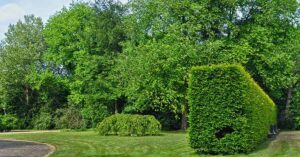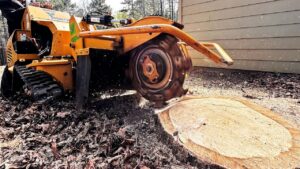A Complete Guide
Lilac trees are beloved for their fragrant blossoms and attractive foliage, making them a favorite in many gardens. However, without proper care, lilac trees can become overgrown, less productive, and more prone to disease. Trimming is essential for maintaining the health, shape, and flowering potential of a lilac tree. Unlike some other trees, lilacs benefit greatly from regular pruning, which encourages new growth and more abundant blooms. This guide provides a detailed step-by-step approach to trimming a lilac tree, the best time to prune, the cost of professional services, and the equipment needed. We’ll also cover some unique aspects of lilac tree care that will help you keep your lilac tree healthy and blooming beautifully year after year.
Step-by-Step Guide to Trimming a Lilac Tree
Proper trimming of a lilac tree involves careful planning and technique to ensure the tree remains healthy and continues to produce its beautiful blooms. Follow these steps for effective lilac tree trimming:
- Assess the Tree:
- Start by evaluating the overall condition of the tree. Identify any dead, diseased, or damaged branches that need removal.
- Check for overcrowded areas where branches may be crossing or growing too closely together.
- Gather the Proper Tools:
- Use pruning shears for small branches, loppers for medium-sized branches, and a pruning saw for larger branches.
- A ladder may be needed for reaching higher branches, especially if your lilac tree is tall.
- Remove Dead, Diseased, or Damaged Branches:
- Begin by removing any dead, diseased, or damaged branches.
- Make cuts just above a healthy bud or lateral branch to encourage proper regrowth.
- Thin Out Overcrowded Areas:
- Thin out areas where branches are growing too densely. This improves air circulation and light penetration, which are crucial for healthy growth and abundant blooms.
- Remove crossing branches and branches that grow inward toward the center of the tree.
- Shape the Tree:
- To maintain a pleasing shape, selectively trim branches to keep the tree’s natural form.
- Aim to maintain a balanced shape with an open center to allow sunlight to reach the interior branches.
- Rejuvenate Older Trees:
- For older lilac trees that have become overgrown or are blooming poorly, consider rejuvenation pruning.
- Cut one-third of the oldest stems down to the ground each year over three years. This encourages new growth and revitalizes the tree.
- Remove Spent Blooms:
- Deadhead spent blooms by cutting back to the first set of leaves. This prevents the plant from expending energy on seed production and encourages more blooms the following year.
- Clean Up Debris:
- Remove all trimmings from around the tree to prevent pests and maintain a neat garden appearance.
- Dispose of diseased material carefully to avoid spreading pathogens.

Best Time to Trim a Lilac Tree
Timing is crucial when trimming a lilac tree to maximize its blooming potential and maintain health. Here’s the best timing for trimming:
- Immediately After Blooming (Late Spring to Early Summer):
- The best time to trim lilac trees is right after they finish blooming in late spring or early summer.
- Trimming at this time allows the tree to set buds for the next year’s blooms, ensuring a full display.
- Avoid Late Summer or Fall Trimming:
- Trimming in late summer or fall can remove next year’s buds and reduce the flowering potential.
- Late trimming can also stimulate new growth that may not harden before winter, leading to cold damage.
- Rejuvenation Pruning (Late Winter to Early Spring):
- For rejuvenation pruning of older lilac trees, late winter to early spring is ideal when the tree is dormant.
- This timing minimizes stress on the tree and promotes vigorous new growth in the spring.
Cost of Professional Lilac Tree Trimming
Hiring a professional to trim a lilac tree can vary in cost based on the size of the tree, the extent of trimming required, and accessibility. Below is an estimate of costs:
| Service | Average Cost | Factors Influencing Cost |
|---|---|---|
| Small Lilac Tree (under 10 feet) | $75 – $150 | Accessibility, number of branches to remove |
| Medium Lilac Tree (10 – 15 feet) | $150 – $300 | Tree health, amount of thinning or shaping needed |
| Large Lilac Tree (over 15 feet) | $300 – $500 | Use of ladders or specialized equipment, proximity to structures |
| Rejuvenation Pruning | $100 – $400 per session | Extent of overgrowth, tree size, number of sessions required |
- Factors Affecting Cost:
- Tree Size and Accessibility: Larger trees or those in difficult-to-reach areas will require more labor and equipment, increasing costs.
- Tree Health: If the tree is diseased or heavily overgrown, additional work and care may be necessary, adding to the overall cost.
- Location: Lilacs near buildings, fences, or other obstacles can increase the complexity and cost of the job.
- Clean-Up Services: Some companies charge extra for debris removal and disposal, particularly if a significant amount of trimming is done.
Equipment Required for Trimming a Lilac Tree
Using the right tools ensures the trimming process is effective and safe. Below is a list of recommended equipment:
- Pruning Shears: Ideal for small branches and precise cuts on thin wood.
- Loppers: Used for medium branches up to 1-1/2 inches thick, providing the leverage needed for thicker branches.
- Pruning Saw: Necessary for larger branches, particularly on older or overgrown trees.
- Ladder: A stable ladder to reach higher branches, especially for taller lilac trees.
- Safety Gear: Gloves to protect your hands from sharp branches, safety glasses to prevent debris from entering your eyes, and sturdy shoes for safe footing.
- Disinfectant: To clean tools between cuts, especially when working with diseased branches, to prevent the spread of pathogens.
Additional Details Specific to Lilac Trees
- Encouraging Blooms: Lilac trees bloom on old wood, so it’s important to trim right after blooming to avoid cutting off next year’s flower buds.
- Pest and Disease Management: Regular trimming can help prevent common lilac problems like powdery mildew, aphids, and borers by improving air circulation and removing affected branches.
- Avoid Over-Pruning: Removing more than one-third of the tree’s canopy in a single season can stress the lilac and reduce flowering. Spread out major pruning over several years if necessary.
- Growth Habit: Lilac trees have a natural vase-shaped growth habit. Trimming to maintain an open center not only improves air circulation but also enhances the tree’s natural form.
Conclusion
Trimming a lilac tree is an essential part of its care, promoting healthier growth, better blooms, and a more attractive appearance. By following the proper techniques and timing, you can ensure your lilac tree remains a vibrant and beautiful feature in your garden. Whether you choose to trim the tree yourself or hire a professional, using the right tools and methods will help you achieve the best results. Regular maintenance, careful trimming, and an understanding of the lilac’s specific needs will keep your tree thriving and blooming beautifully year after year. Whether tackling light pruning or undertaking a rejuvenation, the key is to be mindful of the tree’s natural growth patterns and to trim with a gentle hand.



